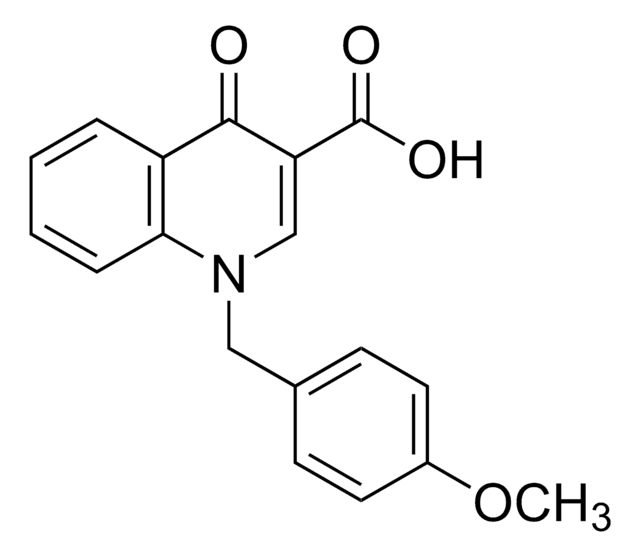V5015
VU0152100
≥98% (HPLC)
Synonym(s):
3-Amino-N-[(4-methoxyphenyl)methyl]-4,6-dimethyl-thieno[2,3-b]pyridine-2-carboxamide
About This Item
Recommended Products
Quality Level
Assay
≥98% (HPLC)
form
powder
solubility
DMSO: >50 mg/mL
storage temp.
2-8°C
SMILES string
COc1ccc(CNC(=O)c2sc3nc(C)cc(C)c3c2N)cc1
InChI
1S/C18H19N3O2S/c1-10-8-11(2)21-18-14(10)15(19)16(24-18)17(22)20-9-12-4-6-13(23-3)7-5-12/h4-8H,9,19H2,1-3H3,(H,20,22)
InChI key
MDNWGCQSCGNTKH-UHFFFAOYSA-N
Biochem/physiol Actions
Features and Benefits
Signal Word
Danger
Hazard Statements
Precautionary Statements
Hazard Classifications
Acute Tox. 3 Oral - Eye Irrit. 2
Storage Class Code
6.1C - Combustible acute toxic Cat.3 / toxic compounds or compounds which causing chronic effects
WGK
WGK 3
Flash Point(F)
Not applicable
Flash Point(C)
Not applicable
Certificates of Analysis (COA)
Search for Certificates of Analysis (COA) by entering the products Lot/Batch Number. Lot and Batch Numbers can be found on a product’s label following the words ‘Lot’ or ‘Batch’.
Already Own This Product?
Find documentation for the products that you have recently purchased in the Document Library.
Articles
Muscarinic acetylcholine receptors are G protein-coupled receptors (GPCRs) and mediate acetylcholine actions in the CNS and non-nervous tissues. Learn more about acetylcholine receptors and their role in cell signaling.
Related Content
DISCOVER Bioactive Small Molecules for Neuroscience
Our team of scientists has experience in all areas of research including Life Science, Material Science, Chemical Synthesis, Chromatography, Analytical and many others.
Contact Technical Service
